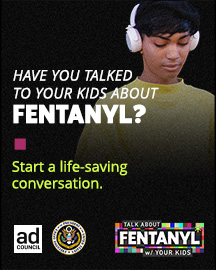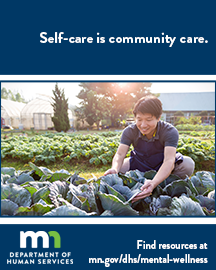Minnesota Ranks 3rd in Child Well-Being But Differences Across Children And Impacts Of The Pandemic Remain
By Hannah Phillips
Data across 50 states show 7.3 million kids with anxiety or depression, as effects of coronavirus crisis linger, Annie E. Casey Foundation finds Minnesota ranks third in child well-being, according to the 2022 KIDS COUNT® Data Book, a 50-state report of recent household data developed by the Annie E. Casey Foundation analyzing how children and families are faring. However, not all Minnesota children have access to the opportunities afforded by this rank. In addition, children in Minnesota and America are in the midst of a mental health crisis, struggling with anxiety and depression at unprecedented levels. The annual report focuses this year on youth mental health, backed up by responses to the Minnesota Student Survey and concurring with a recent assessment by the U.S. surgeon general that conditions amount to a youth “mental health pandemic.”
The report sheds light on the health, economic and other challenges affecting American children as well as how those challenges are more likely to affect children of color.
“Minnesota’s high rank does not reflect the many ways the pandemic has exacerbated already existing opportunity gaps,” said Alisha Porter, Interim State Director of Children’s Defense Fund Minnesota, Minnesota’s member of the KIDS COUNT network. “While some children are coming out of COVID unscathed, too many in our state still must overcome lack of basics like food or shelter, live under the threat of violence and contend with racism, all contributing to troubling outcomes including a mental health crisis.”
The Data Book reports that children across America, and in more than 40 states and the District of Columbia, were more likely to encounter anxiety or depression during the first year of the COVID-19 crisis than previously, with the national figure jumping 26%, from 9.4% of children ages 3-17 (5.8 million kids) to 11.8% (7.3 million) between 2016 and 2020, the year COVID-19 swept across the United States. This increase represents 1.5 million more children who are struggling to make it through the day. In Minnesota, even prior to the pandemic, Minnesota saw increasing percentages of ninth graders reporting a long-term mental health, behavioral or emotional problem, growing from 12.5% in 2013 to 23.1% in 2019. This trend is repeated across the state and in most counties, according to the Minnesota Student Survey.
Racial and ethnic disparities contribute to disproportionately troubling mental health and wellness conditions among children of color. Nine percent of high schoolers overall but 12% of Black students, 13% of students of two or more races and 26% of American Indian or Native Alaskan high schoolers attempted suicide in the year previous to the most recent federal survey. Further, many LGBTQ young people are encountering challenges as they seek mental health support. Among heterosexual high school students of all races and ethnicities, 6% attempted suicide; the share was 23% for gay, lesbian or bisexual students. In Minnesota we see a similar pattern. Over 30% of LGBTQ 11th graders responding to the 2019 Minnesota Student Survey reported an attempted suicide at some point in their life, compared to 7% of their heterosexual counterparts. Twenty-three percent (23%) of American Indian 11th graders reported the same, compared to 9% of their white counterparts.
The topic of mental health is addressed or not addressed in different cultures. There can also be generational differences and stigma related to being vocal about mental health issues. Intergenerational trauma can play a role in how families deal with or do not deal with the topic to begin with (Gopalkrishnan, 2018; Bhugra, 2021). Given the numerous ways in which data on mental health can be quantified (number or share of diagnoses; type of diagnoses; ages), collected (self-assessment; parental reporting; official diagnoses), and impacted by systemic racial and ethnic inequities and cultural variances in accessing mental health services, it is important to look beneath these numbers to better understand how this issue is playing out for children in various communities across Minnesota. Research approaches that center community-based organizations can add critical insights.
“Here in Minnesota, we’ve collaborated with the University of Minnesota and Children’s Minnesota Hospitals and Clinics to survey Asian American youth on their experiences with anti-Asian hate and sentiments before and during the COVID-19 pandemic. With exception to blatant racism (e.g., being called a racial epithet), we observed upticks across various racism-related stressors and associations between racism-related stressors and mental health outcomes,” said ThaoMee Xiong, the Executive and Network Director of the Coalition for Asian American Leaders, a statewide network connecting Asian Minnesotans. “The increase in experiences of racism during the pandemic validates what we’ve been hearing from our young people and demonstrates the urgency of prioritizing not just mental health but holistic approaches to prevent and respond to incidents of anti-Asian hate.”
Each year, the Data Book presents national and state data from 16 indicators in four domains – economic well-being, education, health, and family and community factors – and ranks the states according to how children are faring overall. The data in this year’s report are a mix of pre-pandemic and more recent figures and are the latest available.
The Annie E. Casey Foundation calls for lawmakers to heed the surgeon general’s warning and respond by developing programs and policies to ease mental health burdens on children and their families. They urge policymakers to:
- Prioritize meeting kids’ basic needs. Youth who grow up in poverty are two to three times more likely to develop mental health conditions than their peers. Children need a solid foundation of nutritious food, stable housing and safe neighborhoods – and their families need financial stability – to foster positive mental health and wellness.
- Ensure every child has access to the mental health care they need, when and where they need it. Schools should increase the presence of social workers, psychologists and other mental health professionals on staff and strive to meet the 250-to-1 ratio of students to counselors recommended by the American School Counselor Association, and they can work with local health care providers and local and state governments to make additional federal resources available and coordinate treatment.
- Bolster mental health care that takes into account young people’s experiences and identities. It should be trauma-informed – designed to promote a child’s healing and emotional security – and culturally relevant to the child’s life. It should be informed by the latest evidence and research and should be geared toward early intervention, which can be especially important in the absence of a formal diagnosis of mental illness.
These recommendations are consistent with those offered by Children’s Defense Fund Minnesota. Notably, mental health investments were among the few that received bipartisan support and reached the Governor’s desk during the 2022 legislative session.
“These investments, which included school-linked mental health grants and new emergency beds for kids, were an important first step,” said Debra Fitzpatrick, Director of Policy and Research at Children’s Defense Fund Minnesota. “But with an $11 billion surplus we could have done so much more to support basic needs, make sure no child goes to bed hungry or without their own bed to sleep in, and we could have given communities the resources they need to address the unique challenges and opportunities they see. Hopefully we can build upon bipartisan support to make sure every child has what they need going forward.”
RELEASE INFORMATION
The 2022 KIDS COUNT® Data Book will be available at www.aecf.org. Additional information is available at www.aecf.org/databook. Journalists interested in creating maps, graphs and rankings in stories about the Data Book can use the KIDS COUNT Data Center at http://datacenter.kidscount.org.
About CHILDREN’S DEFENSE FUND MINNESOTA
Children’s Defense Fund Minnesota is one of six state offices for the national Children’s Defense Fund (https://www.childrensdefense.org/about-cdf/). CDF-MN produces a variety of information on Minnesota children through our KIDS COUNT partnership, including data books and county fact sheets and a blog Thriving Children Thriving Minnesota. Input from youth and families (including formal research) drives our advocacy agenda and efforts to connect families to support.
ABOUT THE ANNIE E. CASEY FOUNDATION
The Annie E. Casey Foundation creates a brighter future for the nation’s young children, youth and young adults by developing solutions to strengthen families, build paths to economic opportunity and transform struggling communities into safer and healthier places to live, work and grow. For more information, visit www.aecf.org. KIDS COUNT® is a registered trademark of the Annie E. Casey Foundation.









